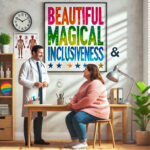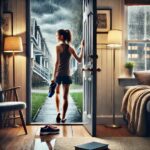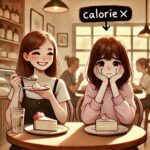‘Go big, go wild, go imagination, all can be done’ attitude creates fulfilling life
‘Go big, go wild, go imagination, all can be done’ attitude creates fulfilling life
Jenny was born in Melbourne but has lived rurally for much of her life. Art was an early experience, and Jenny has used it to communicate, explore, enrich and bring joy to others and herself. Applications have ranged fromexhibitions to working as an Artist in Residence with culturally diverse groups in both small and large festivals. Her sculptural practice has a quirky side, with materials including copper, recycled materials, paper andstainless steel. An art teacher in secondary and tertiary colleges for many years, Jenny is currently working on an exhibition, running a small dress label, and participating in an environment and sustainability group.
By Jenny Toye
I was born in Melbourne in 1949 and lived in South Gippsland on a soldier settlement farm, until I was four years old. My earliest childhood memory is the farmhouse kitchen with the black Aga stove, so big it almost filled one end of the kitchen. There were black and white tiles on the floor, and we had a little duckling called Donald, all fluffy and yellow, who ran around the kitchen. I remember Donald messing on the tiles and mum cleaning up after him. There were also lupins in the garden with a huge pine hedge around it.
My family moved to Warrnambool in the Western district where I did the rest of my growing up. Warrnambool was a special place. I was instantly attracted to the beautiful landscape with its windblown hedges and wild seas of dark blue and green. Growing up in the 1960s and 1970s, we would board ride in lots of places along the coast from Portland to Lorne. My family often spent time at Childers Cove and the Twelve Apostles; the coast was not so touristy then, making the beaches isolated with spectacularly beautiful cliffs, some of which have since fallen into the sea.
My favourite childhood memory, at age seven, was my dad teaching me to body surf at Christies beach in Adelaide on a family holiday. Warrnambool influenced my lifelong love of the sea; I love the ocean and every chance I get, I go to the beach to swim and body surf.
As a teenager I spent my time surfing and roller-skating. My friends and I camped at the Warrnambool beach during the summer and would go to the surf club and the Palais, to dance to the music by live bands and hang out with friends. I had a happy and supportive family and great friends who are still my friends today. I studied art at the Technical College and today I remain a passionate maker of strange things.
I lived in Warrnambool until about 22 years old; at 18 I had taken a job working for an off-set printer which involved drawing up finished artwork, photographing the work on a huge graphic camera about the size of a car and then burning the images into aluminium plates for printing. I did that for about 18 months and then began teaching. I decided to leave Warrnambool for Melbourne where I did teacher training.
I met my husband at teachers’ college. We both loved the natural environment so when we married and moved to East Gippsland, both of us were drawn to the lakes, the beaches, the mountains and the snow and we made full use of them all. We had two children who were a delight and did lots of camping and dinner parties with our newfound friends in Bairnsdale. We both taught at the Technical School which was where Gippsland TAFE is now. It was an all boys’ school and the kids were great country kids. I ran a pottery night class and taught during the day. We did amazing things in our little department — jewellery making, pottery, photography, as well as making toboggans for snow trips with the students.
The staff, nearly all young like us, made the school a happy place to work and East Gippsland was a wonderful place to live and bring up children. I played volleyball in a local competition and we sailed on the Gippsland Lakes at weekends. Often, on a Friday night in the summer after drinks at the Orient, a group of us would venture out on a friend’s “putt putt”. These were memorable occasions, with the moon reflecting in the water under a dark blue starry sky so quiet, peaceful and beautiful.
I had a fraught few years after my first marriage failed and it was hard on the children and hard on both parents, but life goes on and I later remarried. My second husband Richard, a teacher, also was an excellent sailor; we spent lots of time on boats with the kids on the lakes and many happy hours over at Ocean Grange.
I started ocean sailing for the first time in the early 1980s and loved it. In 1989 we both took long service leave for six months and sailed from Lakes Entrance to Lizard Island. This island is located in far north Queensland off the coast around the Cooktown area. Richard’s two daughters and my own two daughters joined us going up the coast for three months out of our six; the kids wrote diary entries each day, which are now interesting to read many years on.
In 1990, I changed jobs and went to work in the art department at the Community College of TAFE (as it was called then). This was a great move for me as I was working with students who were really interested in art.
The art school provided great learning opportunities for many in the community who otherwise would not have continued with education. It was a supportive place for students, and they gained confidence and skills to go on to further study. The studios were often busy after hours with community workshops and projects; it was a creative hub for East Gippsland. When the art school closed because of political changes in 2014, a gaping hole was left in the fabric of our community.
As art staff we negotiated delivery of some of the practical subjects through hands-on participation. Each Easter for 18 years, Mallacoota ran ‘The Festival of the Southern Ocean’, providing opportunities for personal and community development, and educational opportunities for local and regional students, youth and artists alike. The general public who were there for the festival were invited to help make the many props for the festival. The quality and breadth of the program aimed at youth and community showcased a program of concerts, environmental installations and visual arts events.
As staff we first instructed the students in the materials and methods of production. Next, in turn, we helped each other and the public volunteers to make the required pieces for the events.
The festival established links with other communities on the 38th parallel south, including New Zealand, Africa, and South America, as well as Indigenous and non-Indigenous Australians in a range of cultural interactions, providing opportunities for many people to learn and be part of cultural exchange.
The Mallacoota festival community embraced our participation. The students loved staying in Mallacoota for the weeks leading up to and during the festival and had a great time, meeting artists and making new friends, learning to share with others while extending their skills and helping produce significant artistic outcomes. Consolidation of friendships and making new friendships while achieving something for the community, made everyone feel they belonged to a worthwhile team of like-minded people with similar goals. We were proud of our achievements. The hard work was worth it because we all felt appreciated, giving our time and expertise for the good of the whole festival community.
Don Ashby who is now a Mallacoota local, had relocated from the Melbourne Theatre Company’s props department. He was inspiring and multi-skilled and taught me and others many techniques and methods which I still use today, with a “Go big, go wild, go imagination, all can be done” sort of attitude. Mallacoota Arts Council and the staff of the art school at TAFE were in collaboration for nine years of festivals. This was an awesome experience; the cultural exchanges and inspired artistic outcomes have helped shape my life, and I became involved in community art from this starting point.
In 1997, Uniting our Rural Communities visualised a wonderful arts project. The Rural Women’s Cultural and Community leadership program provided a national pilot using art as the means to increase the leadership skills of women in rural and remote communities. Two regions were involved, Gippsland in Victoria and the Atherton Tablelands in far north Queensland.
I was asked to be artist-in-residence for two projects in our region of Gippsland. Mary Salce and Di Deppler were instrumental in the ideas and funding for the Gippsland projects. I became involved through my job, as the art school had a history of community event participation and they knew of me and asked me to apply.
My role was to harness, through discussion, an arts project that reflected the lives of women who were regionally isolated. A travelling roadshow performance called Snakes and Ladders was created in Bairnsdale and in Maffra, a carved wooden outdoor table in the park was decoratively inlaid with resin. There were other projects in Omeo and Orbost.
The project did unite women and I gained a new perspective regarding the lives of women working in regional isolation on farms or living in isolated regional towns. The women I worked with were the backbone of rural life as mothers, wives, cooks, nurses, councillors, teachers and financial wizards to name some of their multitasking roles while farming.
The Gippsland Women’s Network (GWN) projects showed me how important art making is as a vehicle for empowering individuals in communities like rural women; it also taught me to be resourceful. Small budgets are always a challenge and it is a wonderful feeling to create something great out of not very much.
The GWN project provided long-term benefits, especially confidence and leadership skills. Mary Salce was inspirational to all of us as she got things done. In our region she talked to many politicians and convinced key people of the importance of uniting rural women.
Throughout Gippsland, 120 women worked collaboratively, articulating their concerns through filmmaking, roadshow performance and visual artwork.
Ideas for presentation of the projects and how to represent their lives in art form was challenging initially. Once the ideas started to flow confidences grew. Working together on something creative brought many laughs, especially in developing song lyrics like “the whiteness of your sheets”, or “rolling the dice to settle the score”.
This was a wonderful experience. The women learned new skills; they were honest and hands on; they were game to try just about anything put in front of them; and able to communicate and consolidate friendships and networks. At the same time, they were able to celebrate the connection between them while creating the projects.
In the same year (1997) I applied for an Australia Council grant through the community development fund for professional development, a skills exchange. Off to Western Australia I went for six weeks in 1998, with an industrial release organised by the TAFE College. I spent three weeks in the Roebourne in the Pilbara and three weeks at the Bunbury Art Gallery south of Perth setting up an Arts Network group.
The Indigenous people of the Pilbara region had a strong cultural history of carving incised patterns in rocks throughout the Barrup Peninsular. My skill exchange was to show the work crew the resin method I used on the Maffra table. The work crew made a series of garden benches and chairs in which they carved lines and patterns and filled them with natural coloured resin made from tree sap. The incised lines were then filled using a soldering iron to melt the colours into the grooves.
A new outdoor pool was opened while I was staying there, and my friend Michele invited the Pigrim brothers (famous for their South Sea sound) over to her place after the event. It was a beautiful night under the stars, and we had a few beers with the band while sitting around her car port.
It was magic and a fond memory of my time there.
In Bunbury, I made contacts through the gallery and spoke to a variety of local art groups, I held a public meeting and people banded together to create an arts network based on the one I worked in at the East Gippsland Shire Council.
Having had a role in festivals over the years at Mallacoota, gaining a position as arts development officer with the Shire for a year and being granted a professional development opportunity through the Australia Council, gave me the confidence and the contacts to take on bigger projects. In 2001 and 2002 I was both artist-in-residence (River Lights) and concept designer and artistic director (On Salty Ground) for two of the Mildura and Wentworth Arts Festivals.
The 2001 River Lights project was to light Mildura’s CBD while acknowledging the culturally diverse community. The festival board felt this project offered real opportunities to embellish the program and its venues and to engage visual artists in the community to create a series of statements about the working lives of Sunraysia residents. As resident artist I worked with a team of artists to create this multimedia project. I ran workshops for high school and TAFE students and interested community members to create 26 lanterns, three metres tall, in media ranging from dip tins, corrugated iron to laser light roofing. There were four-metre linear steel palm trees stuffed with pink tulle in the main Mildura roundabout and the 23 other lights were spread throughout the CBD and along the Murray River.
Having met and worked alongside some beautiful and creative people in the Mildura community, we talked about doing something for the environment the following year and On Salty Ground was born.
On Salty Ground was a dance and story-telling project. The concept was Green/White/Green, the green turning to white with bad practice creating salinity problems and turning back to green with good practice. It tackled the critical regional issue of soil salinity, a concern dealt with by a range of individuals and agencies on a daily basis. It was an opportunity to focus attention on the local community’s commitment in dealing with salinity.
As concept and visual designer as well as maker, it was a huge project, it was busy and wonderful fun with lots of people involved in its production. It engaged more than 200 people from the Mildura community with a choreographer from Melbourne who trained the 120 dancers.
I flew to Mildura thinking, “You must be mad! You only know a few people in Mildura, so how is this going to be done?” The community response was incredible — I managed to have all the support and volunteers I needed by speaking on ABC radio about the project. Through talking to the local council, a huge workshop at their depot was made available, with support from Shane Hooper, the council’s building maintenance manager. The Mildura art gallery gave me many contacts, and the Festival Director, Lindy Bartholomew, knew many fabulous people in the creative arts.
The local secondary schools made many detailed relief aluminium animals for a large metal tree central to the stage. Students helped to make 120 costumes and stage flats. A local artist, Dimitri Nickas, was employed to weld and build all the large items and the large staging required for the dancers. He was helped by Geoff Farrell – his righthand man, both of whom I worked with closely in producing the overall design for the production. I had many working drawings. We made a salt cauldron from old trolley wheels and a huge blue lit fibre glass bowl. Two circular stages were joined by a running bridge, a metal tree as tall as a telephone pole as well as corrugated trees with red throats leading up to the stage.
The performance on the Loch Lawns on the Murray River over three nights brought record crowds from many of the ethnic groups living in Mildura. This was one of the best outcomes for me because until then, many of the Arts Festivals events were more highbrow, like Mozart on the Murray, and many families could not afford to go to these events. On Salty Ground was a cheaper event and because this production involved a lot of school children from the community, parents came and could afford to bring their families.
All of the above has made me resourceful and practical. Working alongside people and getting to know them has been very rewarding; to see their honesty and amazing work ethic. At the time we laughed and stressed out about timelines in production, but I made lifelong friends. It taught me that I loved sharing my skills and working together with people for the common good.
At this stage in my life I feel I have been given the keys to the good life! I have the time and health to do almost anything. Spending time with my delightful family, spending winters in far North Queensland with my brother and his family. Making art and being involved in environmental projects, as well as making sculptures in my studio in Bairnsdale are my passions. I am lucky to have all of this and lovely friends with whom I often travel.
Last words: be yourself, be kind to one another, enjoy what you have, be creative, embrace change and enjoy every day.





